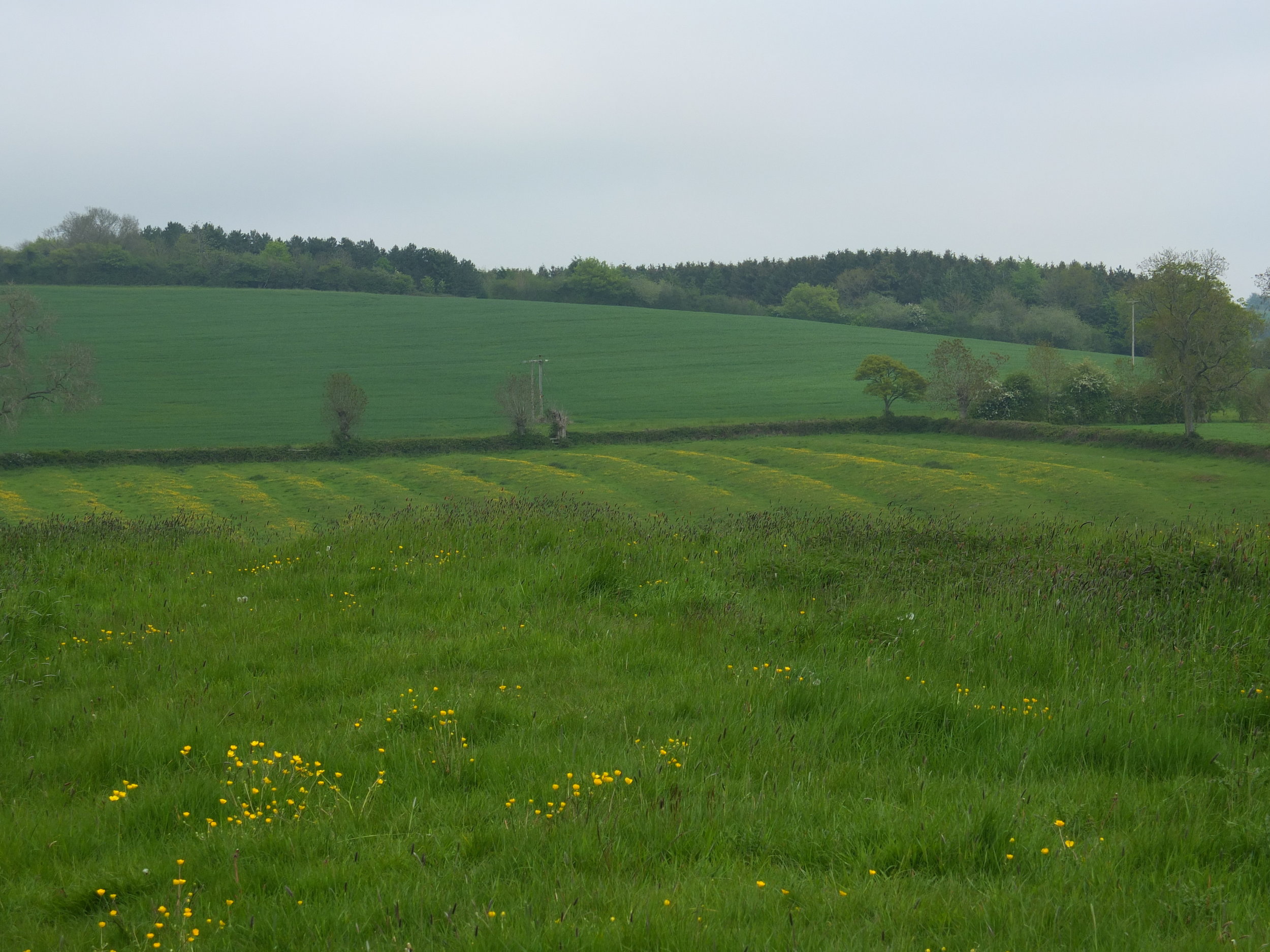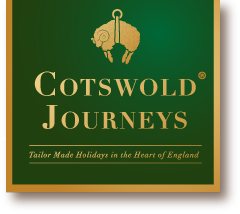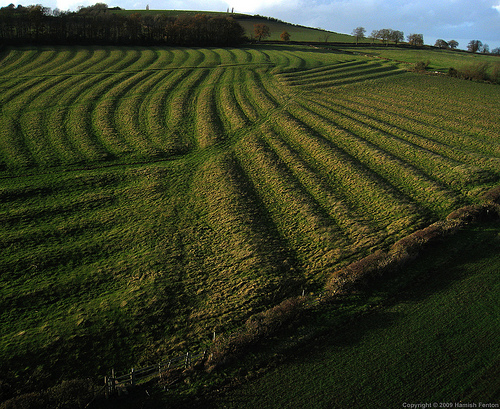Much of the Cotswolds lie in the county of Gloucestershire, one of the counties where traces of the ridge and furrow farming system are much in evidence. When you see a field of grass and buttercups growing out of a corrugated surface, rippling, if the sun is at the right angle, in alternate strips of dark shade and emerald, you are almost certainly looking at the remains of medieval ploughing typical of the open field system (very large fields owned by the local lord of the manor, farmed in strips by individual families). In Britain, the earliest examples date to the immediate post-Roman period, continuing in use in some areas until the 17th century. Surviving ridges are parallel, ranging from 3 to 22 yards (3 to 20 m) apart and up to 24 inches (61cm) tall – but were up to six feet tall when in use. Older examples are often curved. The effect was created as the result of ploughing with non-reversible ploughs on the same strip of land each year. The primary purpose of ploughing is to turn over the upper layer of the soil, bringing fresh nutrients to the surface, while burying weeds and the remains of previous crops. It also aerates the soil and allows it to hold moisture better.
When ploughing was done with large teams of small oxen— the standard unit in Anglo-Saxon and medieval England was eight, in four yokes — the team and plough together were very long, which created a particular problem. At the end of the furrow, the leading oxen were turned left along the headland, while the plough continued as close to the headland as possible (the strongest oxen, placed at the back, could pull the plough alone for a short distance). By the time the plough reached the end of the furrow, the oxen were lined up facing left along the headland. Each pair was then turned around to cross the end of the strip, before starting down the opposite furrow. By the time the plough reached the beginning of the furrow, the oxen were already lined up ready to pull on down the other side.

The result of this was to twist the end of each furrow slightly to the left, making these earlier ridge and furrows into a slight reverse-S shape, which survives in some places as curved field boundaries, even where the ridge and furrow pattern itself has vanished.
At some point, when strip farming ceased, many of these fields were turned over to grazing and have not been plowed up since. Some, therefore, have survived hundreds of years with the same pattern, a remarkable insight into medieval daily life. In the Cotswolds, they are widespread, with fine examples at Stanway (even the cricket pitch has to accommodate them), Oxenton, Leckhampton Hill, the Rissingtons, and many others.


0 Comments